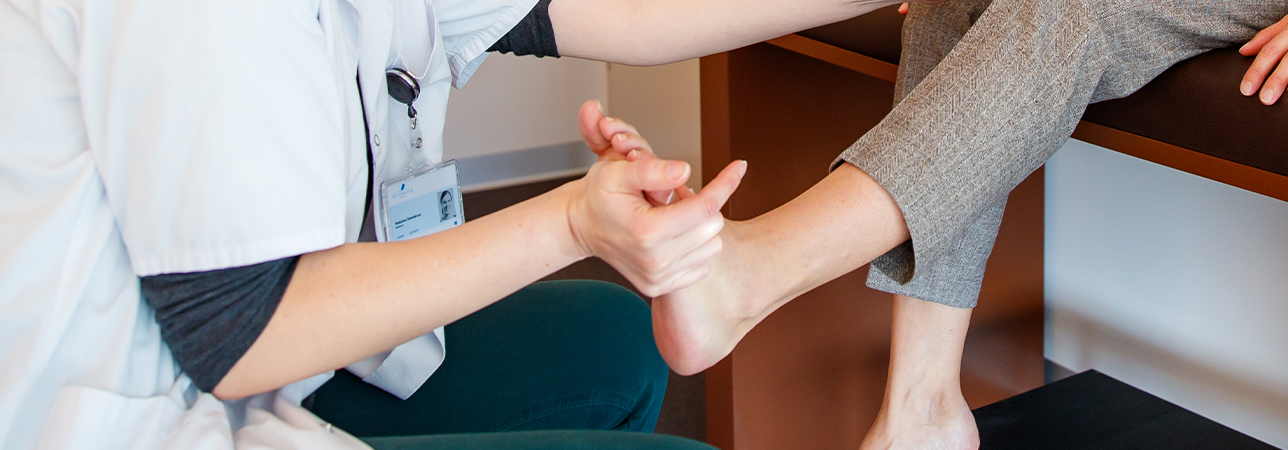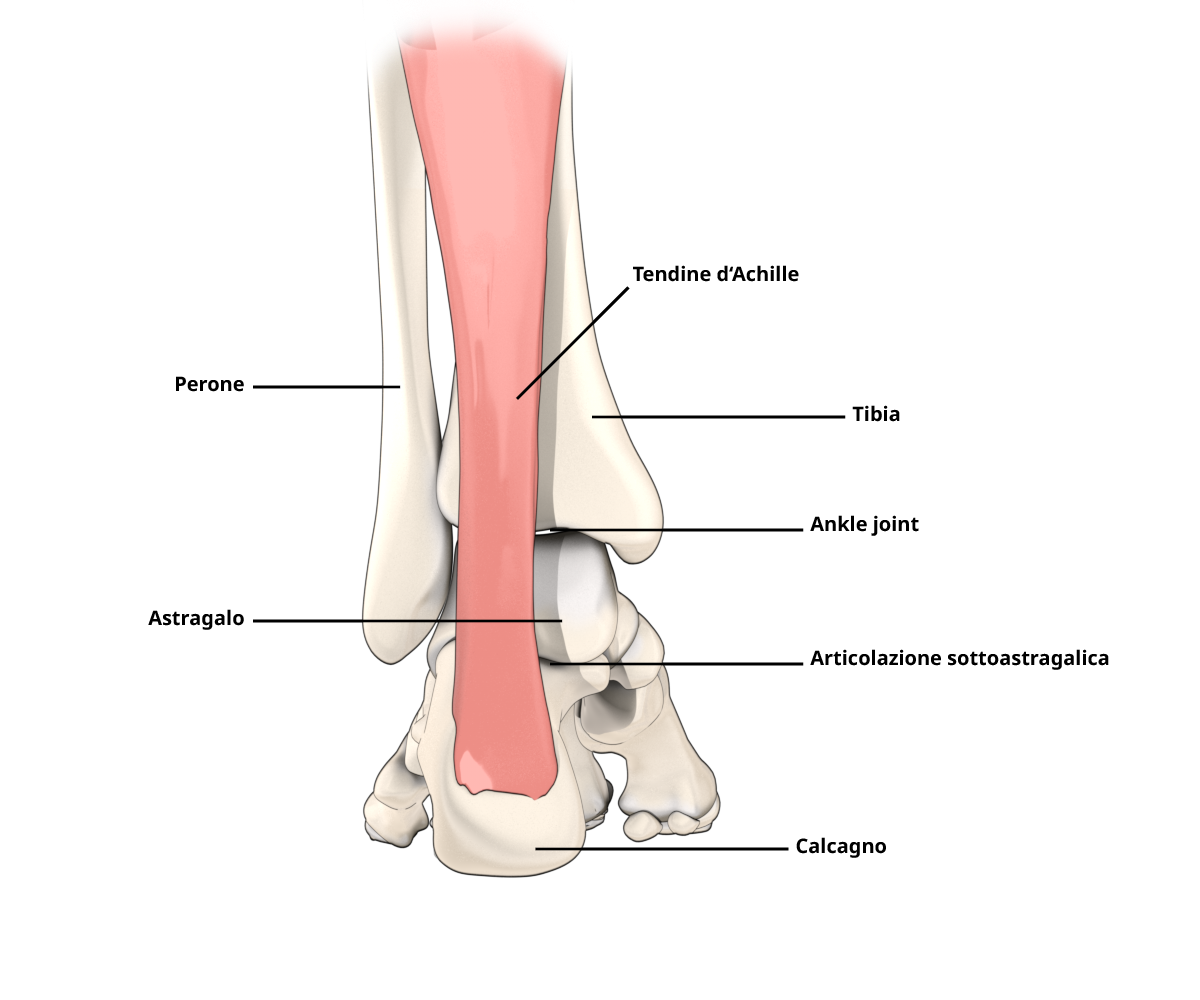
Achilles tendon rupture
An Achilles' tendon tear or rupture occurs when the Achilles’ tendon is severed. Because the Achilles' tendon is one of the strongest tendons in the human body, it takes a lot of stress for it to rupture.
Achilles' tendon ruptures usually occur during sport, e.g. in the event of movements with a very rapid change of direction.
Symptoms
Those affected report that it feels as if someone stepped on the tendon. When it tears, there is a loud crack similar to the crack of a whip.
Compared to other ruptures, pain is not usually persistent.

Diagnosis
Achilles' tendon tear are identified by touch. After the tear, a dent appears between the skin and the tendon. Affected individuals are also unable to lift their heel off the ground while standing with one foot on the affected leg.
The Thompsen test is the most reliable test to detect a ruptured Achilles' tendon. The patient adopts the prone position with their feet hanging freely. The tendon is considered to be ruptured if the sole of the foot does not move downwards when the while the calf muscles are pinched by the doctor.
Treatments
Conservative therapies
If the ends of the tear touch when the foot is lowered into the ‘equinus position’, it is possible for the tendon to grow back together without surgery. An ultrasound examination is used to determine whether the equinus position is possible.
During the treatment period, the foot is stabilised with an orthosis or a special insole, to enable the patient to begin bearing weight on the foot. Full resilience is built up gradually with early functional therapy and physiotherapy. Treatment is usually complete after six to eight weeks.
Surgical treatment
If the ends of the tear no longer touch when the foot is lowered, surgery is required. During the operation, the two end of the tear are sewn together.
The procedure is performed by making an incision up to eight centimetres long over the Achilles' tendon, or a minimally invasive procedure can be carried out using small incisions. If the Achilles' tendon is severely damaged and a tendon transplant is required, the procedure is performed under general anaesthesia. During the procedure, the tendon tube is opened and the ends sutured. After the operation, the foot is immobilised. As soon as the wound has healed, early functional treatment begins.
Aftercare
Scientific studies show that the healing rate following an operation is several percent higher than if the injury is only treated conservatively. Surgery does come with a risk of wound infection, but this can be reduced with the help of new, minimally invasive surgical techniques. Surgical therapy is therefore preferrable, especially in young and active patients.
Irrespective of whether the treatment is conservative or surgical, functional aftercare is required, such as early movement therapy to rebuild strength in the joint. Special shoes with raised heels and a rigid tongue enable the patient to fully weight-bear on the affected leg again after a short period. Physiotherapy can sometimes begin after just three weeks. Six to eight weeks after the operation, it is usually no longer necessary to wear special shoes or splints.
However, targeted exercises must then be used to restrengthen the calf muscles. The injured person can play sports again three to six months after the end of the treatment.
FAQs
Can I do sports again after ankle surgery?
Depending on the course of recovery, it is usually possible to play sports again between the third and sixth month after the treatment.
How do I prevent ankle osteoarthritis?
Scientific studies show that the recovery rate is significantly higher after the surgical option. Surgical intervention is therefore recommended for patients who are very active when it comes to sports.






